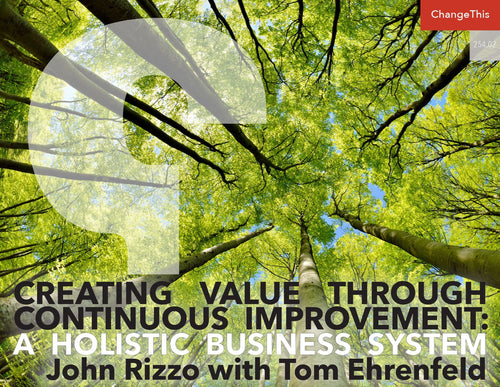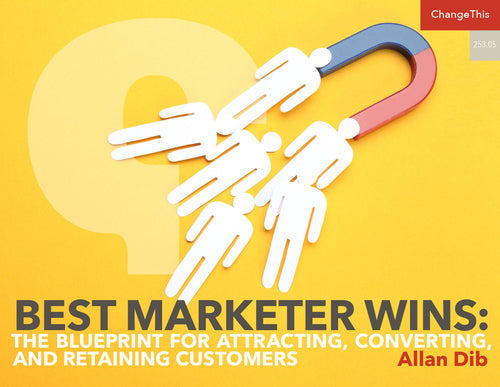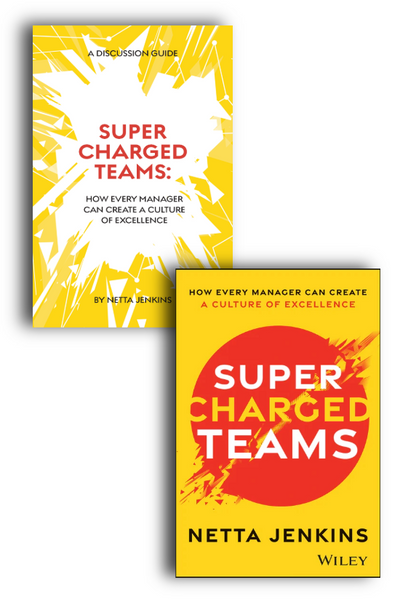Reimagining Capitalism and Activism
We are a tribal species.
We divide ourselves into groups of our own justification, sensible or not. Hunters or gatherers. Settlers or nomads. Men or women. Cis or trans. Natives or immigrants. Citizens or noncitizens. Black or White. Rich or poor. Gay or straight. Believers or nonbelievers. Extroverts or introverts. Rural or urban. Nationalists or globalists. Republican or Democrat. Conservative or progressive.
We prefer our tribes to the others. We believe in the superiority of our tribe, and we push back against those who threaten our group. Our tribes give us a sense of belonging, cooperation, purpose, comfort, and support. We nurture our tribes with myths and morals, facts and fictions, to bind ourselves to one another.
Yet these ties that bind us can also blind us. They can blind us to our limited imagination, to our prejudices, to our similarities, to our shared humanity, to our common hopes, and to our greater good.
In one sense there are two dominant tribes in modern life: the capitalists and the activists. There are those who seek to change the world through the private market forces of business, commerce, and entrepreneurialism, and those who seek to change the world through the public social forces of protest, movement, and organization. As chronicled in my new book, The Capitalist and the Activist, recently, there has been an unexpected and uneasy coming together of these two tribes, of capitalists and activists, to change our lives and our society during an era when the world seems to be coming apart.
In recent years, crisis after crisis has bruised, battered, and barricaded the United States and the world. An unforgiving, deadly virus circumnavigated the globe, massive wildfires seared thousands of acres of homeland, record rainstorms flooded entire countries, and an inhumane racism reared its hateful face again and again. Stores shuttered. People starved. Homes burned. Cities emptied. Crime on the rise. Jobs lost. Families destroyed. And lives ended too soon.
During these uncertain and tumultuous times, many people have retreated into dangerous impulses of tribalism, seeking to blame and hurt others for painful changes they have experienced, reviving ancient grievances for a new generation, denying reality to fit their convenient tribal myths, insurrecting against popular will to violently reclaim lost power.
Old divisions—buried and ignored for too long—have manifested cruelly and bleakly, reminding us of a harsh history that is still ever present and never really past. A normal state of injustice and struggle for some has become self-evident for all seeking a new sense of normal.
Yet during this dark period streams of bright light have come from activists and capitalists.
The righteous, do-better spirit of activists blossomed from the soils of injustice. Moved by the wrongs they witnessed from the safety of their quarantined homes, masses of activists of every creed, color, and age risked their lives and health to peacefully march, stand, and kneel for justice across the country. Battered by hurricanes, singed by wildfires, scorched by heatwaves, drowned by unforgiving floods, and frozen by blizzards, activists marched and lobbied for a greener, more sustainable future. Galvanized by an urgency for change, activists in the United States organized millions to vote and engage in the political process.
Similarly, the entrepreneurial, can-do spirit of many good capitalists has persisted in the depths of a pandemic, across acres of flames and valleys of systemic wrongs. Motivated by the activists, businesses gave hundreds of millions of hours and dollars to fight racial injustice. Propelled by the constraints and failings of our public institutions and leaders, numerous companies provided necessities to help local communities. Animated by memories of the dead and dying, scientists and executives at pharmaceutical companies worked tirelessly to discover and distribute cures for a deadly virus.
Too often the stories of activists and capitalists are told as disparate, unrelated stories of distinct tribes in their own languages: one as a story of selfless acts for the public good, and the other as a story of selfish pursuit for private profit. These narratives suggest that those working in private enterprise have little to do with those toiling in public service, and vice versa.
Telling and understanding these stories as separate tales belies the fact that within all of us are impulses to act in support of causes for the public good as well as desires for personal gain; that within all of us are both capitalists and activists. Telling and understanding these stories as separate tales also obscures potentially powerful lessons and principles that we can derive and use to create something better. For the truth of the matter is that more and more these stories of activism and capitalism are part of one larger story.
The Capitalist and the Activist tells this one greater unfolding story about business, social change, and progress in contemporary America. It tells this larger story in a simple but not oversimplified manner, to bring more people into conversations and discussions that have been happening in the rarefied cloisters of boardrooms, classrooms, and conference rooms. It tells this larger story during a period when old assumptions, old biases, old ways, and old narratives are being challenged and changed. It tells this larger story mindful of the structural shortcomings and systemic limitations of capitalism and activism, yet optimistic of the possibilities of progress. It tells this larger story to business executives, astute investors, community activists, engaged citizens, interested scholars, inquisitive students, and all those curious to understand the forces shaping the social changes unfolding around them. It aspires to remind us about the roads we have traveled for progress, and the roads we can construct to overcome obstacles, old and new, toward something better using the means of capitalism and activism. Understandably, no single book can contain all or even most of the solutions to the social problems that have plagued us for so long. But a book can help us understand how we arrived here, how we can see things differently, and how we can change. It can give us a shared framework, a common tribal story to motivate us, to push ahead, to move forward.
The Irish poet Seamus Heaney once said, “If you have the words, there’s always a chance that you’ll find the way.” Ultimately, The Capitalist and the Activist is an attempt to put into words the larger story of activism, capitalism, and social change unfolding around us. It is a hopeful story of promises and perils. It is a story that we all share and can all shape together to help us find the way—the way forward toward rebuilding anew something extraordinarily better.
The days when activists focused on moral fights over social issues while businesses concentrated on the amoral pursuit of commercial profit are gone. Today, businesses and their executives are at the frontlines of some of the most contentious and important social issues of our time. Through pronouncements, policies, boycotts, sponsorships, lobbying, and fundraising, corporations are actively and publicly engaged in issues like voting rights, racial justice, income inequality, gun violence, immigration reform, gender equality, and climate change. This is the new reality of capitalism and activism in America.
THE HOPEFUL JOURNEY AHEAD
What happened on Valentine’s Day 2018 in Parkland, Florida, was a story of tragedy, but what happened in the days that followed was a story of triumph. Ordinary people—young and old, teachers and students, parents and children, Republicans and Democrats—found the activist within, marched, organized, and worked to combat the scourge of gun violence in the United States. And many executives—moved by the activism of their shareholders, consumers, customers, and fellow citizens—leveraged the powers and influence of their business enterprises to aid in this difficult social issue.
Together, capitalists and activists were able to make more progress than political leaders have tried and failed to do on their own for years. Together, capitalists and activists offered a different path toward progress during an era of dysfunctional politics.
To be sure, recognizing the virtues and mutual gains that can be had from capitalists and activists working together is not a denial of their faults and foibles. Recognizing the significant good that capitalists can bring about for society does not blind us to the serious harms that they can sometimes create or perpetuate in society. Recognizing the transformative power wielded by activists does not deny the obstacles that they can sometimes present for policymaking.
Just as humans are neither all good or all bad, their institutional and collectively efforts at capitalism and activism are neither all good or all bad.
We often see activists and capitalists as two different and disconnected groups of people. In one group are people who toil nobly and selflessly for the public good. In the other group are people who work avariciously and selfishly for private wealth. Two disparate groups chasing different dreams in society, one for social progress and the other for private profit. One of people who march and protest for priceless change, the other of people who labor and strive for princely sums.
Yet this bifurcated view is too narrow; it ignores the contradictions, complexities, and richness of human beings. A being that the poet renders as large, contradicting, and containing multitudes. A being that can work for a giant corporation and rally peers to challenge unfair corporate practices. A being that can demonstrate for climate change and invest in oil and car companies. A being that can love their high-paying office job and take days off to march for a higher minimum wage. A being that can protest for gender equality and patronize businesses that perpetuate systemic sexism. A being that can appreciate the prosperity of profit and fight to alleviate poverty.
Finding opportunities for collaboration between capitalists and activists while seeing their inconsistencies is not a denial or discounting of their failings. Rather, it is a recognition of our own inconsistencies and impurities—and our ability to persevere and push forward in spite of them.
Capitalist enterprises and activist enterprises are ultimately both human enterprises. They reflect the contradictions, complexities, and richness of the human beings that create them, own them, patronize them, move them, work for them, and manage them. They are imperfect and impure, just like the dedicated flawed people behind them.
Too much progress has been needlessly impeded by arbitrary notions of purity and perfection. Such notions have prevented us from seeing capitalists and activists properly— to our detriment.
For too long, we have been seeing capitalists and activists wrong. We have been seeing them disparately, detached and disjointed from one another. Perhaps that limited and impoverished view was accurate in the past, but it is no longer so. In truth, the social capital that activists possess and seek to turn into lasting policy often intertwines with the economic capital that capitalist possess and seek to turn into sustainable profits. We need a broader, richer, and more complicated view of capitalists and activists, and the power and progress that may be possible when we see them differently. The Capitalist and the Activist is about seeing them right—seeing them as part of one, as part of each of us, as part all of us.
Adapted from The Capitalist and the Activist.
Copyright © 2022 by Tom C.W. Lin. All rights reserved.
This book is available at all bookstores and online booksellers.
ABOUT THE AUTHOR
Tom C. W. Lin is an award-winning law professor at Temple University’s Beasley School of Law. He is also an academic fellow at George Washington University’s Center for Law, Economics & Finance. He is an expert in business organizations, corporate governance, and financial regulation. His scholarship has been published in many leading academic law journals. His expertise has been featured in major media outlets like Bloomberg News, CNN, Fortune, the Financial Times, the Wall Street Journal, and the Washington Post. His research has also been cited by courts and regulators around the world.











































